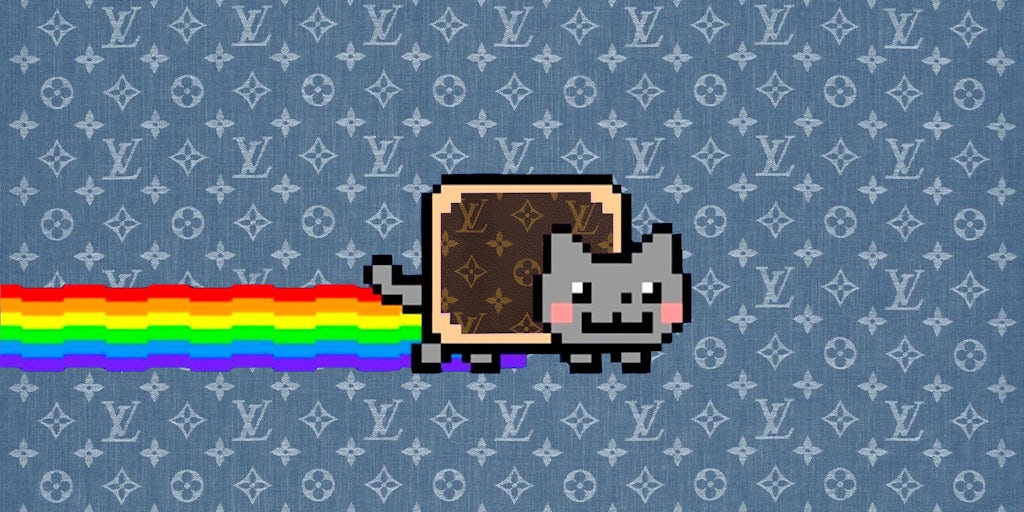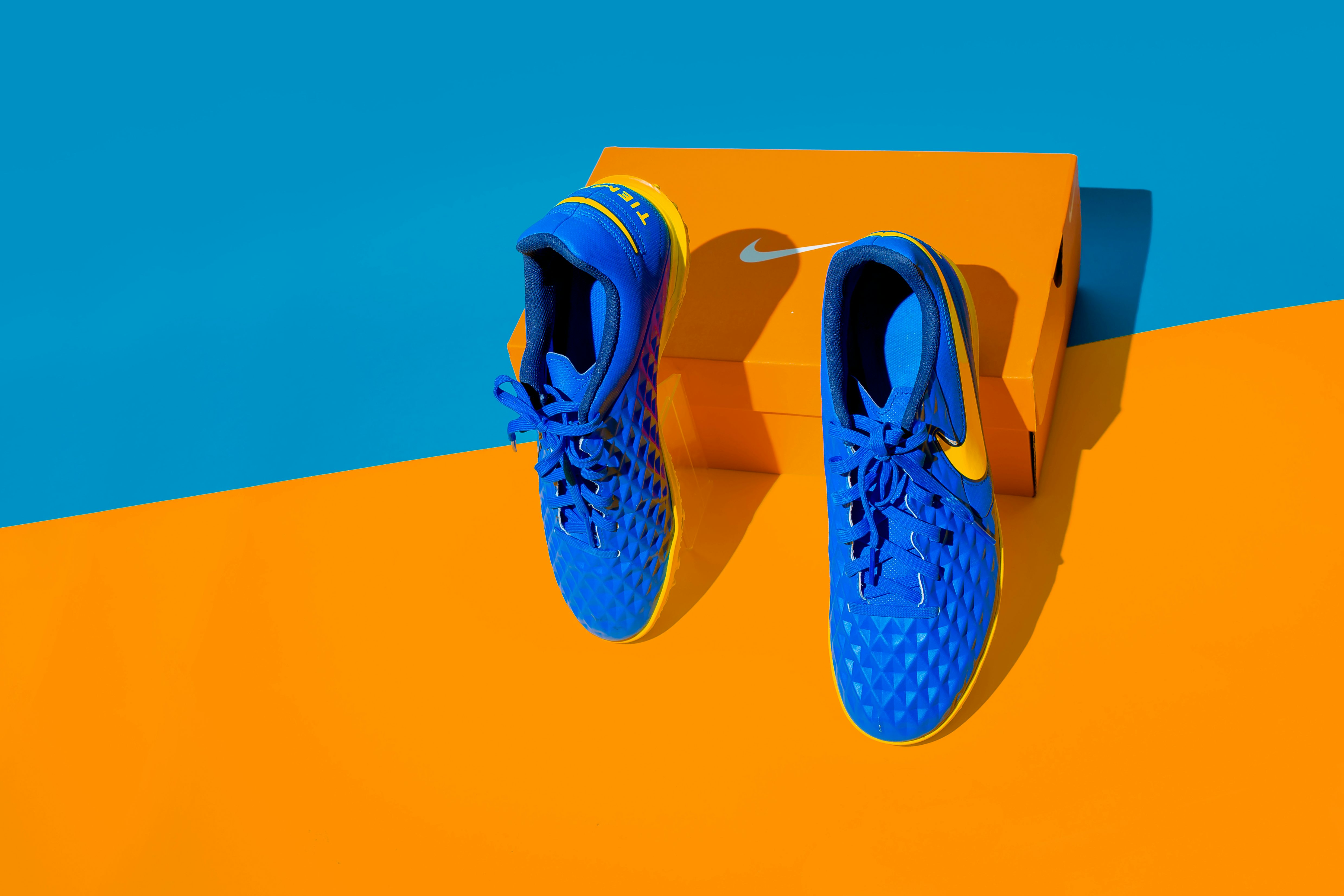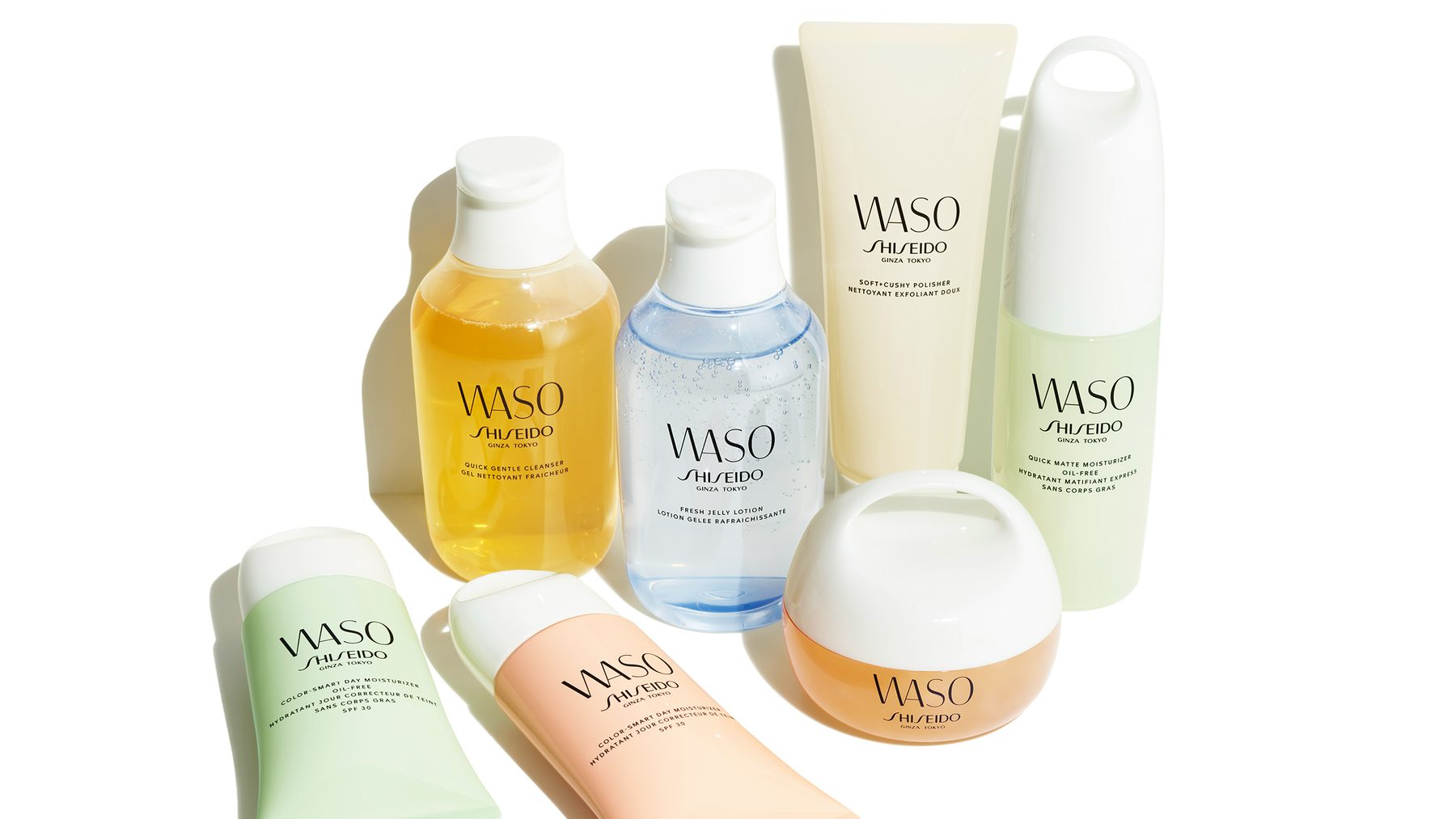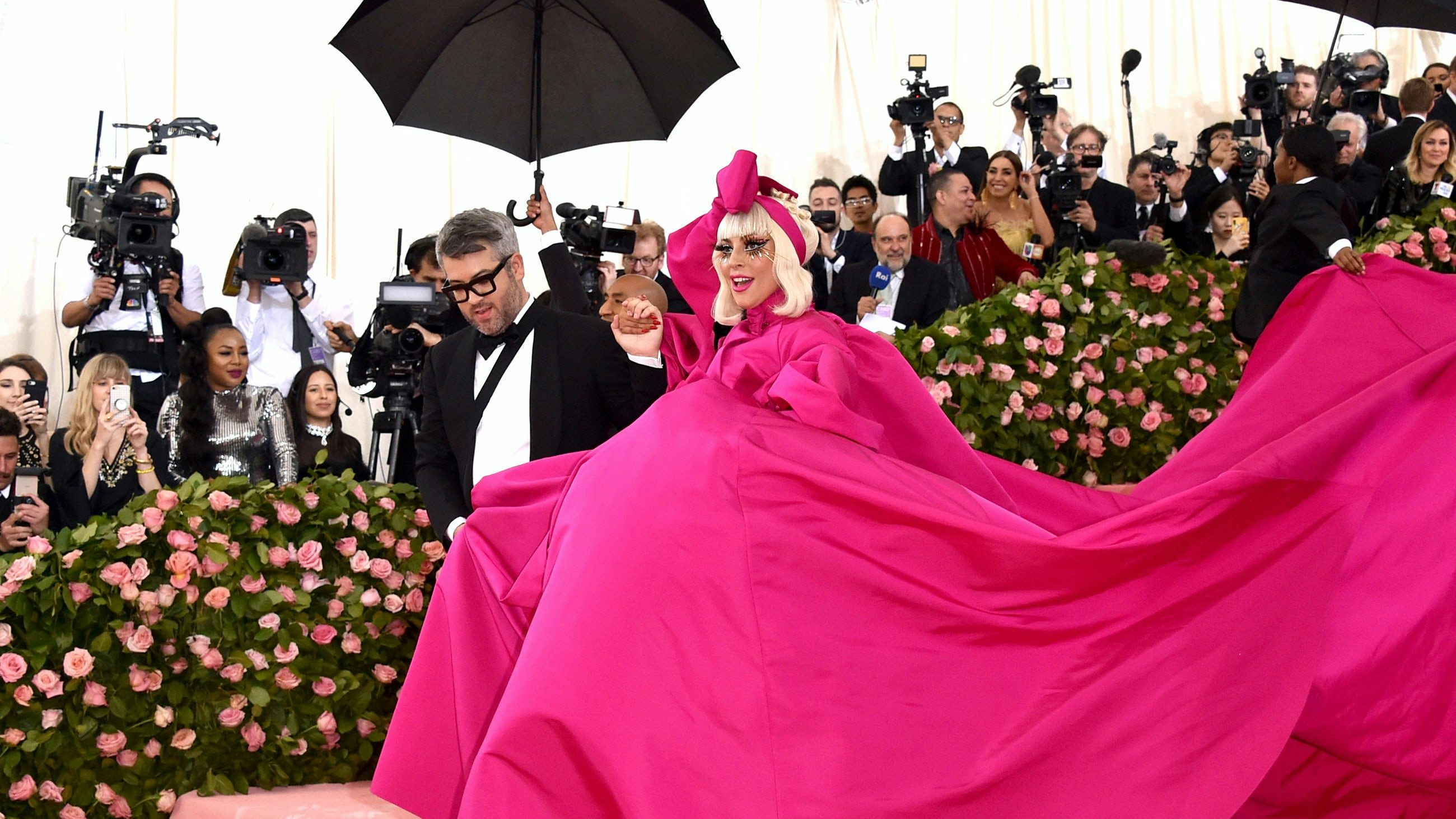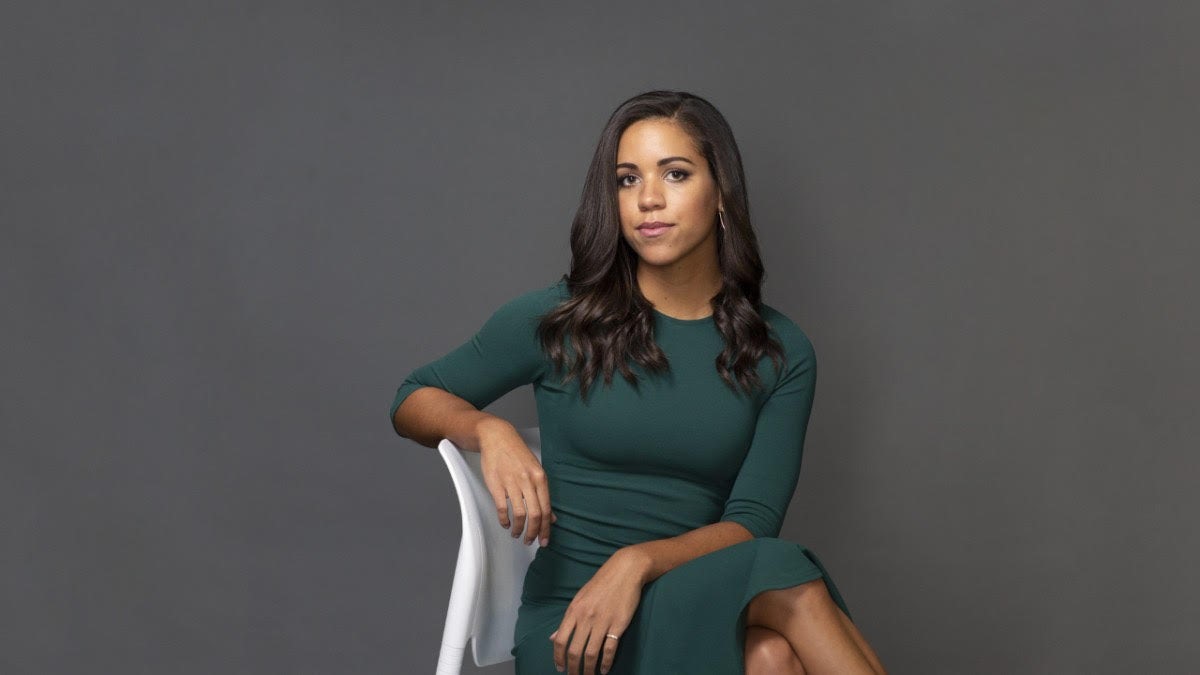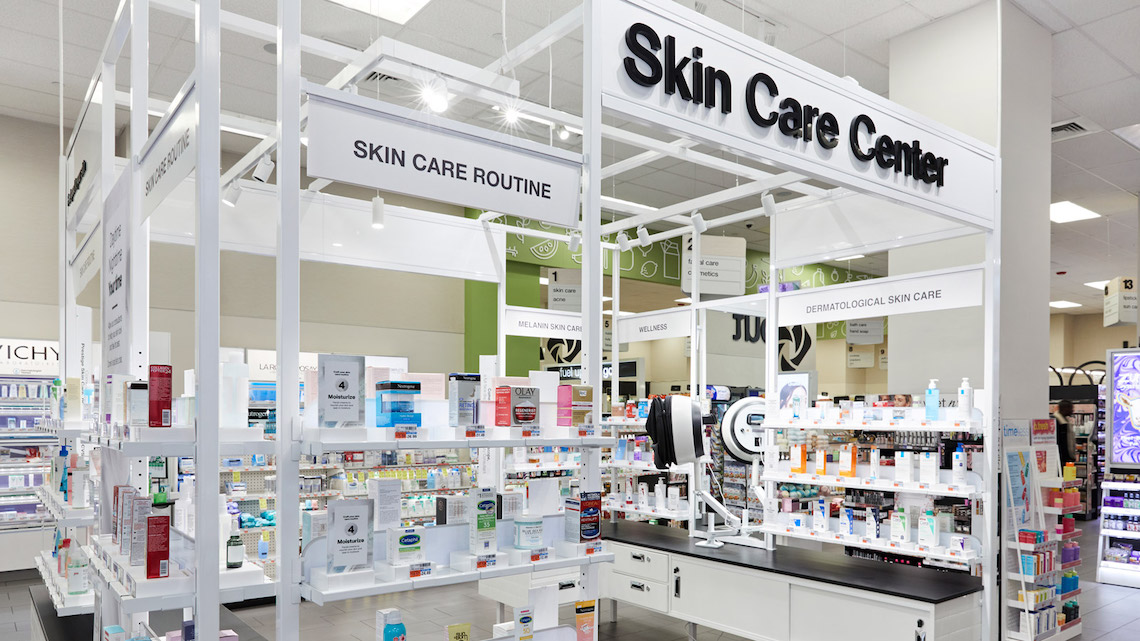NFTs for Fashion: Fad or Opportunity? | This Week in Fashion, BoF Professional
Last week, NFT mania hit new highs when 255-year-old auction house Christie’s sold a JPEG file by the digital artist known as Beeple for a record-breaking $69.3 million.
Some saw a speculative bubble, others a historical inflection point. But there’s no disputing the explosion of interest in “non-fungible tokens,” unique digital assets, whose authenticity and ownership is verified by a digital ledger known as a blockchain. Proponents of NFTs say they remove a key barrier to virtual goods, which are otherwise easily copied, being valued and collected like physical objects.
A unique version of Nyan Cat, a flying cartoon cat with a Pop-Tart body and rainbow trail that became a viral sensation and has been seen and shared hundreds of millions of times since it was first uploaded to YouTube almost ten years ago, sold for $580,000 last month.
And it’s not just the art world that’s taking the plunge. In music, Grimes sold 10 digital works on NFT marketplace Nifty Gateway for nearly $6 million earlier this month. Some of the pieces were offered in large editions and sold for $7,500 each, while others were auctioned as one-offs. A music video called “Death of the Old” commanded almost $389,000.
Meanwhile, in sport, NBA Top Shot, a partnership between the NBA and blockchain company Dapper Labs, has sold virtual basketball cards featuring short video clips for thousands of dollars each. An NFT depicting a LeBron James dunk recently sold for $208,000.
The NFT craze has come to fashion, too. Two weeks ago, a collaboration between 18-year-old crypto artist Fewocious and virtual sneaker brand RTFKT Studios sold out in seven minutes, generating $3.1 million. Though each virtual edition of the drop came with a physical pair of shoes, the digital product with associated bragging rights was the primary source of value.
According to market sources, leading fashion brands are examining the NFT space. But are NFTs a real opportunity for the fashion industry or just a passing fad?
There’s no denying that the space is heavily hyped, not least by speculators. During the pandemic, housebound day traders looking for new and entertaining asset classes have poured money into the market. What’s more, NFTs are typically purchased with cryptocurrency and many see a bubble within a bubble as crypto investors, who have seen the value of their holdings skyrocket, pile into the space.
“I feel like I got a steal,” the mystery buyer of the record-breaking Beeple work, a Singapore-based crypto entrepreneur who goes by the pseudonym MetaKovan, told The New York Times this week. As it turns out, MetaKovan, who had bought other works by Beeple and sold fractional ownership of them to the public as NFTs, may have also profited from pushing the price he paid Christie’s to astonishing heights in a calculated cash grab.
But beneath the hype there are signs that NFTs could have staying power.
From paintings to baseball cards, people have long assigned emotional and social value to physical objects that far outweigh their material worth. After all, canvas and paint is worth nothing compared to a Picasso. The same is true for fashion goods like handbags and sneakers.
Collecting these objects, over which we enjoy a kind of sovereignty, turning them into extensions of ourselves, is a fundamentally human activity deeply linked to how we craft and communicate our identities. And as we lead more and more of our lives online, everywhere from social media to video games, the concept of collecting and displaying digital objects seems likely to grow.
How should fashion brands respond?
Many are taking a wait and see approach, not the worst idea given how fast the space is shifting. For those eager to experiment, NFTs can be minted with a range of creative assets — a designer’s sketch or a memorable runway moment — and used to drive a variety of marketing outcomes, from being seen as “innovative” to deepening fan loyalty. It doesn’t hurt that NFTs are hot with precisely the young, affluent, tech-savvy audience many fashion brands are after.
But issuing NFTs that are linked to physical products and extend their value is perhaps the most strategic way to engage with the space. These could be arty digital certificates that prove ownership of physical products, earning consumers clout when they display them online (unlike an Instagram pic or unboxing video, NFTs prove the goods haven’t been returned or resold) or “digital twins” for people to wear online, when they play video games, for example.
“Luxury customers have digital lives now, and it’s natural for them to want to take products into these lives,” said Ian Rogers, chief experience officer at French crypto start-up Ledger and an advisor to LVMH. “The idea of buying a luxury handbag and taking a digital representation of this into a video game or another digital environment is not too far away.”
NFTs linked to physical goods can also help combat counterfeiting, serving as proof of authenticity. They could also have a transformative effect on the resale market. That’s because with NFTs, the blockchain that authenticates them can also create a contract that governs their future use. In the case of Beeple, the artist is set to make 10 percent in royalties every time one of his NFTs is sold on the secondary market. What if handbags and sneakers came with NFTs that guaranteed the brand got a royalty each time the product changed hands?
While diving headfirst into the digital art gold rush may be tempting for fashion brands eager to test the waters and generate marketing buzz, NFT strategies anchored in physical goods could unlock far greater value for the sector.
THE NEWS IN BRIEF
FASHION, BUSINESS AND THE ECONOMY
Nike sneakers. Shutterstock.
Nike earnings miss estimates. The world’s largest sportswear maker said revenue rose to $10.4 billion in its fiscal third quarter ending February 28 from $10.1 billion a year earlier. Analysts had expected sales to hit $11 billion, according to data from Refinitiv, but a slump in brick-and-mortar sales as the pandemic drags on and logistical headaches dented the company’s performance.
H&M sales decline less than expected in first quarter. Net sales at the world’s second-biggest apparel retailer fell 27 percent from a year earlier, or 21 percent when measured in local currencies, to 40.1 billion crowns ($4.7 billion).
Adidas, Peloton form partnership to tap pandemic fitness demand. The German sportswear maker and the New York-based at-home fitness platform will create a co-branded apparel collection. Items will be available starting March 25 on the companies’ websites and in select stores and showrooms.
Kanye West and Gap have billion-dollar ambitions for Yeezy deal. The figure reflects estimates from UBS contained in a private document reviewed by Bloomberg. UBS pegs the value of Yeezy, West’s sneaker and apparel business with Adidas and Gap Inc., at between $3.2 billion to $4.7 billion, with the Gap tie-up estimated to be worth as much as $970 million.
Chinese sportswear giant Li Ning’s 2020 revenue growth disappoints. In 2020, Li Ning saw its revenue increase 4 percent year-on-year to 14.5 billion yuan ($2.2 billion), missing analyst estimates of between 5 and 8 percent growth for the year. Offline retail sales of new products recorded a single-digit decline last year, which the company attributed to the impact of the pandemic on its brick-and-mortar business.
Zalando aims for more than 10% of Europe fashion market. The e-commerce company set a new target for gross merchandise volume (GMV) — sales on its site by itself or by partners — to exceed €30 billion ($35.7 billion) by 2025, after announcing on Monday that its revenue forecast for 2021 was well above market projections.
Stone Island and New Balance set multi-year collaboration deal. The cult favourite Italian sportswear brand, fresh off an acquisition by Moncler, will start releasing items produced with the American footwear-focused brand in 2021 as part of a long-term deal.
Ralph & Russo enters administration. The British couture business, which also sells ready-to-wear and accessories, has felt the economic impact of Covid-19 as a dearth of red carpet events and evening soirees dampened demand for couture gowns and python clutch bags. The brand will go through a period of restructuring, but will continue to operate throughout the administration process, the company said in a press release.
UK lawmakers call for crackdown on companies with supply chain links to forced Uighur labour. The directive came in a report that said existing UK legislation surrounding supply chain transparency and modern slavery “is out of date [and] has no teeth.” The report highlighted the role of the fashion industry in addressing this, noting that many industry players have “accepted that it is not currently possible to fully trace the cotton used in final products, which means cotton produced in Xinjiang could still be part of their supply chains.”
THE BUSINESS OF BEAUTY
Waso products. Shiseido.
Shiseido to shutter youth-focussed Waso Brand in Japan. Shiseido has announced the imminent closure of its Waso brand in the Japanese market. The skincare line, designed specifically for a younger demographic, was first launched amidst much fanfare in 2017. According to Shiseido, Waso will continue to be available in other global markets outside its home country.
Amazon bets on Indian beauty brand. Direct-to-consumer beauty brand MyGlamm has raised 175 crore rupees ($24.1 million) in a series C funding round led by Ascent Capital, Amazon and Wipro Consumer, which values the company at more than $100 million.
Waldencast Acquisition Corporation goes public via SPAC. The multi-brand beauty and personal care company formed by investment from Waldencast Ventures and former Anheuser-Busch executive Felipe Dutra has gone public with a $300 million IPO, which includes an additional investment of up to $333 million in forward purchase agreements.
PEOPLE
Brandon Maxwell and Lady Gaga at the Met Gala. Getty Images.
Walmart appoints Brandon Maxwell creative director of Scoop, Free Assembly Brands. The world’s largest retailer hired Maxwell as the first-ever creative director for its Scoop and Free Assembly fashion brands. Maxwell will oversee four seasonal collections a year for the two labels, starting with influencing this year’s holiday range before his full lines appear in the spring of 2022.
L Brands founder Les Wexner leaves board. Wexner, 83, and his wife, Abigail, won’t stand for re-election at the annual shareholder meeting in May, the company said Thursday. Wexner had already relinquished his chairman seat last year at L Brands, the owner of Victoria’s Secret, though he had maintained a chairman emeritus role. The change caps a near six-decade run for Wexner, who has faced scrutiny in recent years for his ties to disgraced financier and convicted sex offender Jeffrey Epstein. It comes amid wider change at the company. Victoria’s Secret is being split off in the coming months after struggling to adapt to changing consumer tastes.
Pinduoduo founder Colin Huang steps down. On the same day it was announced that Pinduoduo had overtaken Alibaba to become China’s largest e-commerce company according to the metric of annual active buyers, its founder and chairman Colin Huang stepped down.
MEDIA AND TECHNOLOGY
Alexi McCammond will no longer become Teen Vogue’s new editor in chief. Axios on HBO.
Incoming editor in chief Alexi McCammond is out at Teen Vogue. The former political reporter at Axios was heavily criticised online for past tweets that included racist anti-Asian and homophobic statements. She apologised publicly about the statements last week, indicating her intention to still take on the role despite the backlash, but announced on Thursday that she will not take over the Condé Nast teen title.
China market regulator clamps down on livestream e-commerce. China’s market regulator on Tuesday tightened scrutiny over the country’s booming livestream e-commerce platforms, where internet influencers sell goods directly to consumers, citing concerns about poor quality products and misleading advertising.
Snapchat acquires tech startup Fit Analytics. The social media platform acquired the fit tech startup, in an attempt to further move into the fashion and e-commerce space. The terms of the deal were not disclosed.
YouTube to roll out short-form video service in US to take on Tiktok. The service, Shorts, lets users record mobile friendly vertical videos that can be spiced up with special effects and soundtracks pulled from a music library.

